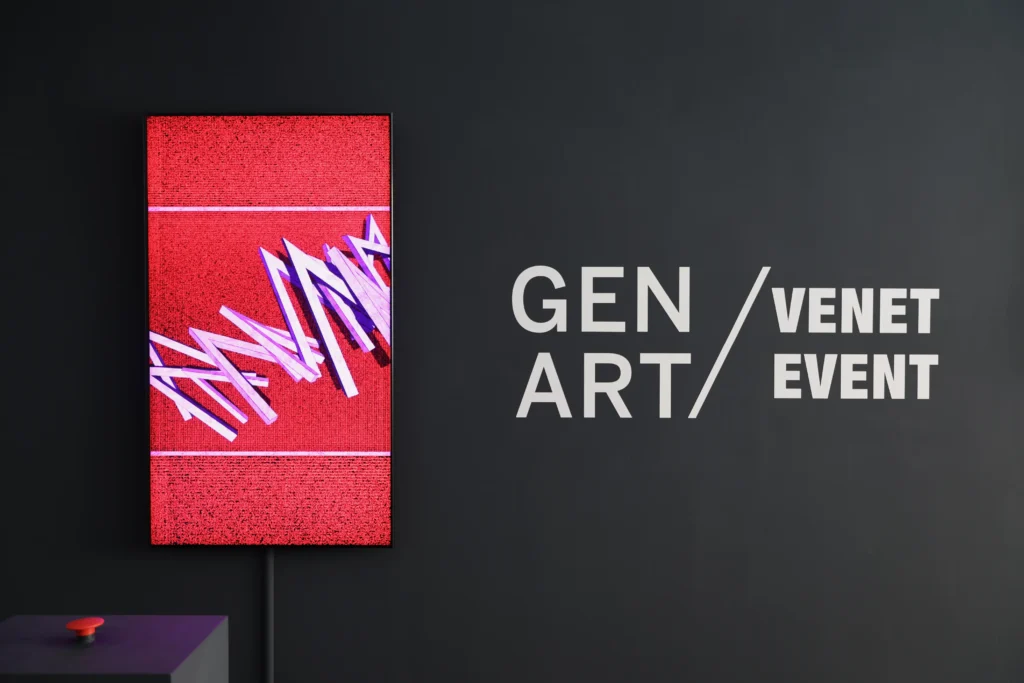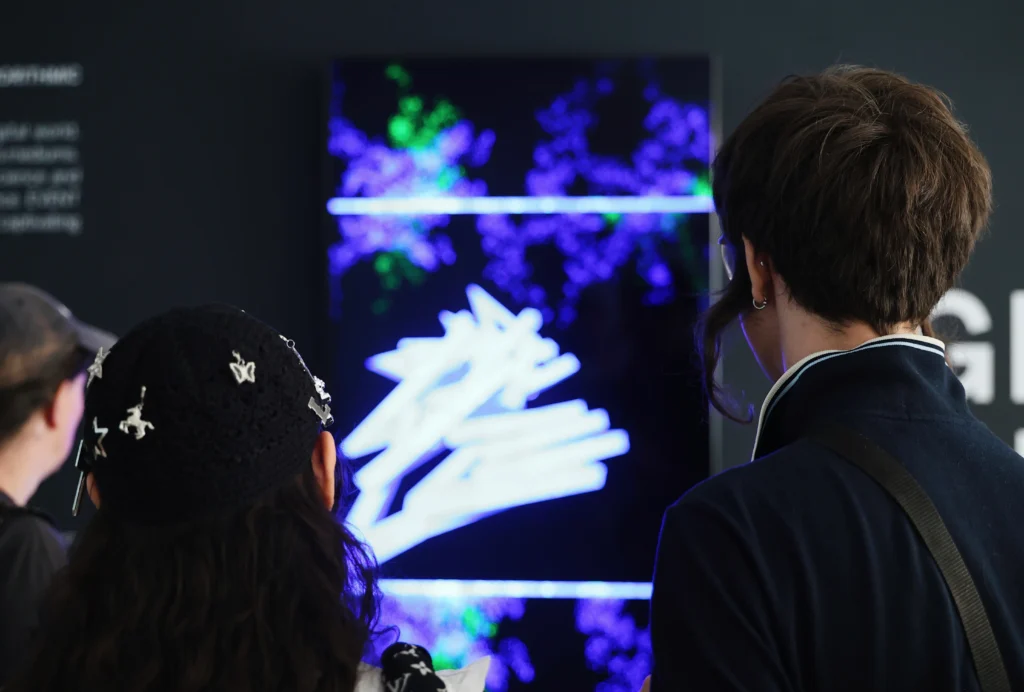The Digital Art MilE
Sigg Art Foundation in Basel
Sigg Art Foundation is thrilled to participate in the first-ever digital art fair in Basel, The Digital Art Mile 2024. The initiative aims to create a vibrant hub for digital art and innovation, featuring exhibition spaces and conferences during Art Basel, June 10-16, 2024. Our booth will feature artists whose work integrates new technologies, code, and AI, exploring innovative art forms like VR. The exhibit includes monumental installations, photography, generative images and videos that demonstrate the artistic potential of AI. Highlighted artists include: Justin Aversano, Grégory Chatonsky, Ben Elliot and Bernar Venet.
Justin Aversano
Justin Aversano is an American contemporary artist and photographer known for his work in the field of portrait photography, particularly focusing on themes of identity, community, and human connection. Born in Queens, New York, Aversano earned a degree in film and television production from the School of Visual Arts in New York City. Beyond traditional gallery exhibitions, Justin Aversano’s work has also significantly impacted the NFT art community and beyond. With a keen eye for human connection and storytelling, his “Twin Flames” series, in particular, has received widespread acclaim in 2021. This collection quickly became the highest-selling photography NFT collection of all time. Through his lens, Justin Aversano weaves together the stories of people and places, forging connections that transcend the boundaries of time and space. He skillfully captures the essence of fleeting moments, the depth of human faces, and the vibrant tapestry of communities that surround him. His photography is a testament to the power of imagery in uniting diverse lives and experiences into a cohesive narrative, highlighting the beauty of the human spirit and the rich tapestry of life’s moments. His influence in the art world, particularly within the NFT community, positions him as a key figure in the discussion about the future of art in the digital age.

↘︎ TWIN FLAMES & DOPPELGÄNGER
Through a collection of 100 portraits of twins, Aversano explores themes of twinhood, shared identity and human connectivity. The images that make up this series were originally shot in three film formats – Polaroid, 120mm and 4×5 – over the course of fourteen months from May 2017. This series was born out of personal loss and a deep interest in the unique connections between twins, exploring themes of identity, togetherness, and the human experience. Each portrait is carefully composed, capturing intimate and revealing moments that go beyond mere likeness to touch on the very essence of individuality and connection. In 2021, Aversano unveiled his “Twin Flames” NFT collection on OpenSea. This collection quickly became the highest-selling photography NFT collection of all time. The idea of a window into the intimate and often elusive relationship between twins is reiterated in the Doppelgänger series. Justin Aversano and Kim Asendorf unveil a collection of 1000 unseen outtakes from the healing journey of Twin Flames restructured through code. This collection is a set of 1000 unique animations created in collaboration with Kim Asendorf, known for his Pixel Sorting script. Processed through code, unique variations of the original twins portraits by Justin Aversano become their own glitched alter ego before our eyes.
Gregory Chatonsky
Gregory Chatonsky is a French-Canadian artist. Netart and AI pioneer. He founded Incident.net in 1994. His exploration of digital materiality led him to question ruins and flows in the 2000s. In 2009, he began experimenting with AI, followed by a seminar at ENS Ulm on artificial imagination, where he is a guest artist-researcher. Chatonsky’s work is a vast exploration of the ambiguous relationship between technology and existence. Using a multitude of media, both digital and traditional, the artist has developed a body of work in which language, the body, the city, extinction, the network, landscape, memory, etc. weave a fiction without narrative. Each new work is an iteration that materially takes its place in a modular structure that breaks down the world. The corpus as a whole is the latent space of an artificial intelligence. He has exhibited at the Palais de Tokyo, Centre Pompidou, MOCA Taipei, Museum of Moving Image, Hubei Wuhan Museum, and others. His works are part of private and public collections (CNAP, FAC, BNF, Hubei Museum, Musée Granet, etc.)
↘︎ SECOND EARTH
Terre Seconde, exhibited at the Palais de Tokyo in 2019, is presented here as an installation. It tells the fiction of an IA who, after the disappearance of the human species and the probable destruction of the Earth, attempts to generate new versions of it.
Using the billions of data accumulated on the Web, she produces new minerals, organisms, plants, landscapes and settlements. Sculptures, also generated by AI fed by 3d files ranging from dinosaurs to human beings, represent possible living beings. Photographs show the interplay between the organic and the mineral, between our subjectivity and exteriority. We hear the monologue of the AI, the result of the cloning of the artist’s voice, which questions the nature of its creation and its own status: has the Earth really disappeared? Is this production real or just a fantasy? Is it reflective, or does it simply repeat phrases that have already been written? Is it being observed? Is there a viewer?
Terre Seconde reinvents the Cartesian formula from “Cogito, ergo sum” to “Sum, ergo dubito”: I am, therefore I doubt. Exploring the relationship between artificial imagination and the Anthropocene, as if the acceleration of our productions were a function of a generalized sense of finitude, Terre Seconde outlines a possible future that also took the form of a novel published in 2022 by Editions Rose.
BEN ELLIOT
Ben Elliot (b. 1994) is an artist who addresses contemporary themes such as the impact of emerging technologies, the rise of influence marketing, and the formation of socioeconomic trends. In his process, Elliot often incorporates leading companies, individuals, and objects to examine the concepts and values they embody.
His work has been presented at FRAC Pays de la Loire, France (2024), Art Meilun Museum, Changsha, China (2024), Esther Schipper, Berlin, Paris (2023), Flatmarkus, Zurich (2023), Reiffers Art Initiative, Paris (2022), Unit London (2021), König Galerie, Berlin (2021), Galerie Hussenot, Paris (2020), Exo Exo, Paris (2019), Magasins Généraux, Pantin (2019). His work is in the collections of X Museum, Beijing; FRAC Nouvelle-Aquitaine MECA, Bordeaux; Collection VR Dafaux, Paris; MACAAL Musée d’Art Contemporain Africain Al Maaden, Marrakech; and Sigg Art Foundation among others.

↘︎ METAONE
Metaone is an ambitious metaverse project which aims to redefine our relationship to the creative space and be a vessel for forward-thinking cultural forms. Ben Elliot developped Metaone with the ideas of a virtual paradise that represents a future world where history, nature, technology and science intertwine and enhance one another. The first presentation of the project was organized by Olivier Renaud Clément and took the shape of an installation at Esther Schipper in Berlin and Paris.
This VR artwork offered a guided experience, which includes a soundscape by Kingdom, taking visitors into the four distinct environments that constitute Metaone:
Shape, an area that is a space for discussions on future architecture, design, and Web3 aesthetics.
Deep, a dreamlike journey into the world of data and AI.
Infinite, imagining unlimited creativity through generative software.
Zen, a tranquil, sensory space, designed to promote well-being and foster a beneficial connection to the metaverse.
BERNAR VENET
Bernar Venet, born in Château Arnoux in 1941, is a master of art transformation. A New York resident since 1966, he now resides in Le Muy, where he opened the Venet Foundation in 2014. His artistic journey began with radical stances in Nice, evolving upon arrival in the US and aligning him with Minimalist and conceptual art pioneers. Venet’s acclaim spans monumental corten steel sculptures, painting, performance, poetry, sound, design, and photography. His work graces prestigious institutions globally, from Centre Pompidou to MoMA and the Guggenheim, with public commissions across Asia, Europe, and the United States, and global appearances at Versailles and the tallest public artwork in the world L’arc Majeur, all testaments to his influence and contributions to the world through his art. Over the last six decades, Venet’s practice has responded to the contemporary moment, exploring new processes, materials, and technologies while staying true to his overarching exploration of order and disorder. Yet, what sets Venet apart is his unyielding exploration of lines, rejecting metaphorical expression, embracing literal decisions, and anchoring his work in science and mathematics. His art navigates the realms of monosemy, where everything is denotative, objective, and immediate.
↘︎ EVENT - Presented by Sotheby's
Sotheby’s proudly presents EVENT, a collection of 500 algorithmic artworks by renowned conceptual artist Bernar Venet. EVENT delves into the interplay of chance and unpredictability in the digital world, building on Venet’s six-decade exploration of entropy and gravity across various mediums. Combining his deep understanding of sculpture with the languages of science and mathematics, Venet offers a unique and thought-provoking digital experience.
EVENT marks a new chapter in Venet’s work, inviting viewers to engage with the captivating dimensions of long-form on-chain creativity.
EVENT leverages blockchain technology, allowing collectors to mint unique outputs from Venet’s proprietary algorithm in a dynamic and interactive experience.
EVENT is supported by ArtBlocks Engine, violuk projects, and ntent.

PANEL DISCUSSION
June 12th, 2024
‘Digital Signal / Extended Practice.
Tool, medium of subject.’
Panel Discussion moderated by Dominique Moulon featuring Ben Elliot, Gregory Chatonsky and Justin Aversano.
INSTALLATION VIEWS
↘︎ TWIN FLAMES & DOPPELGÄNGER - Justin Aversano
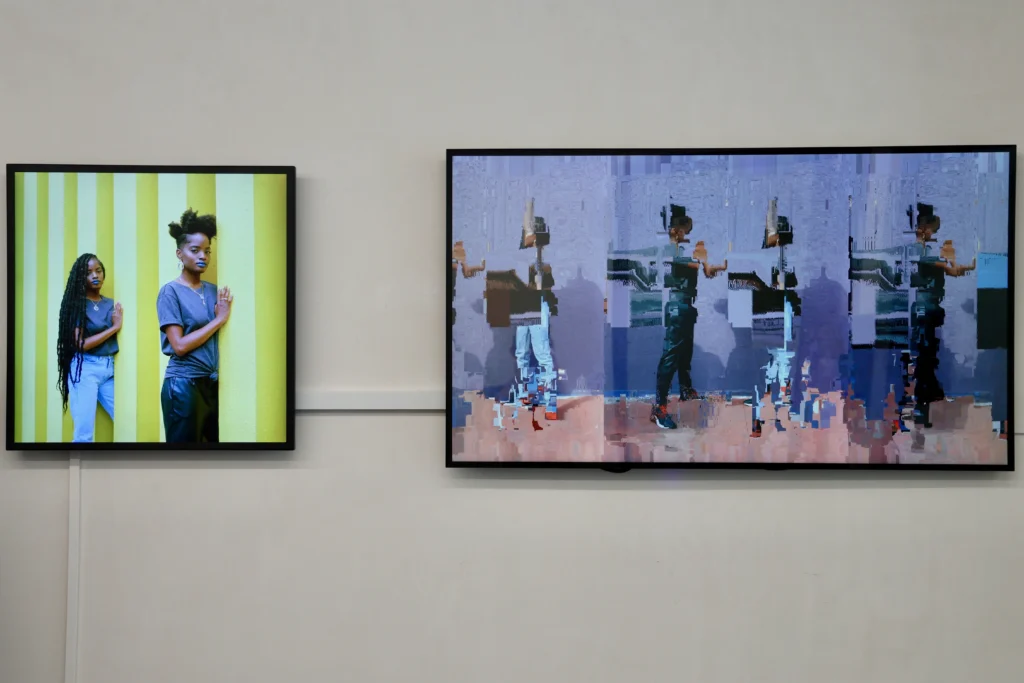
↘︎ TERRE SECONDE - GRÉGORY CHATONSKY
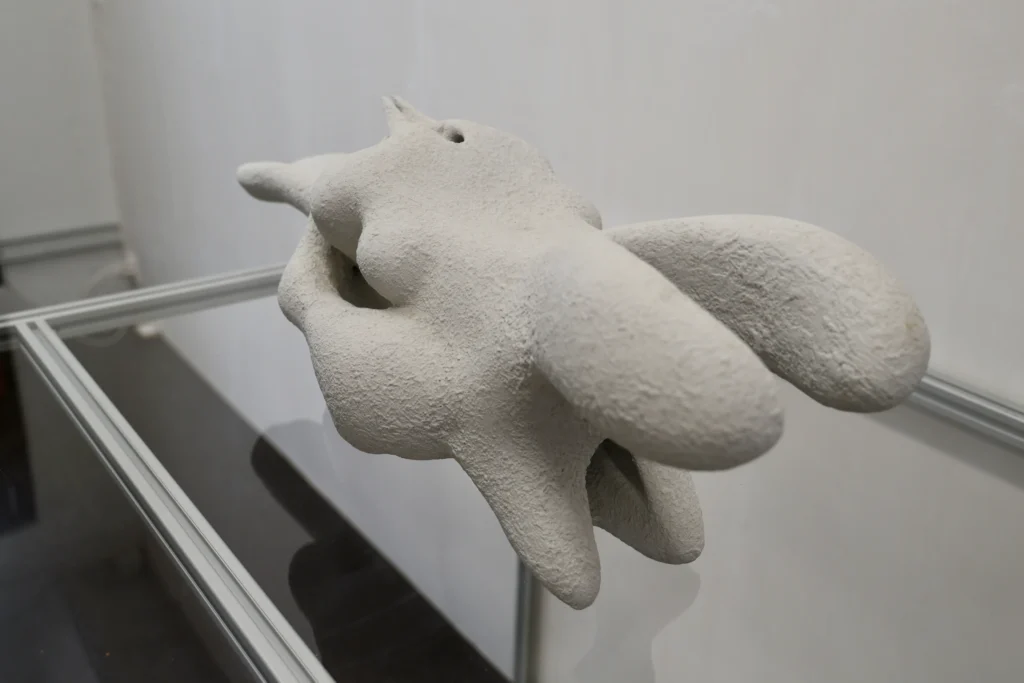
↘︎ METAONE - BEN ELLIOT

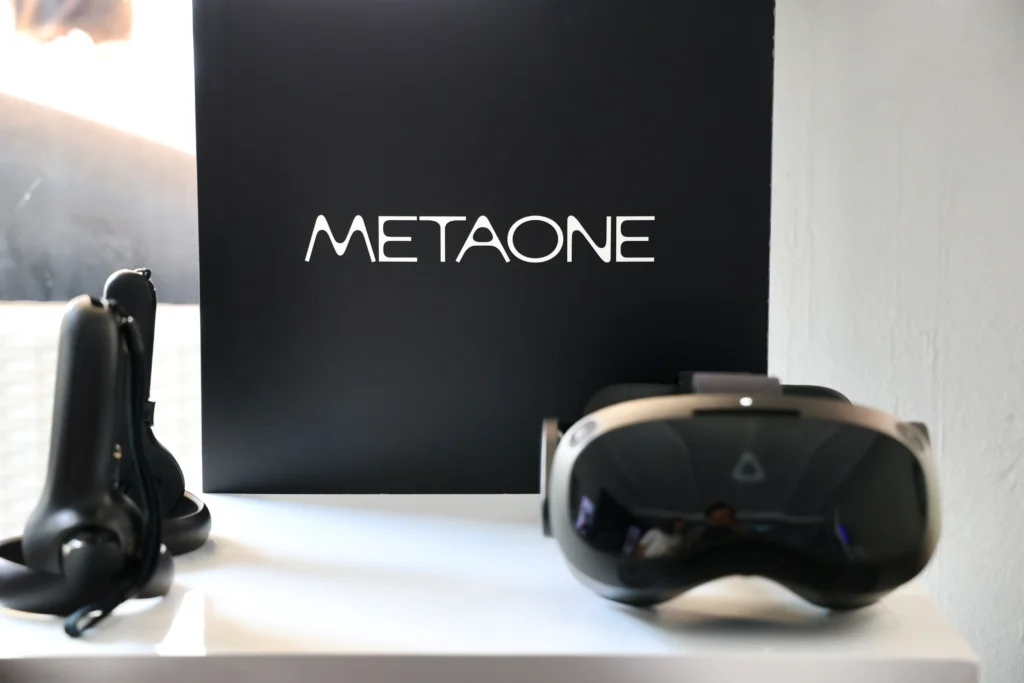
↘︎ EVENT - BERNAR VENET
